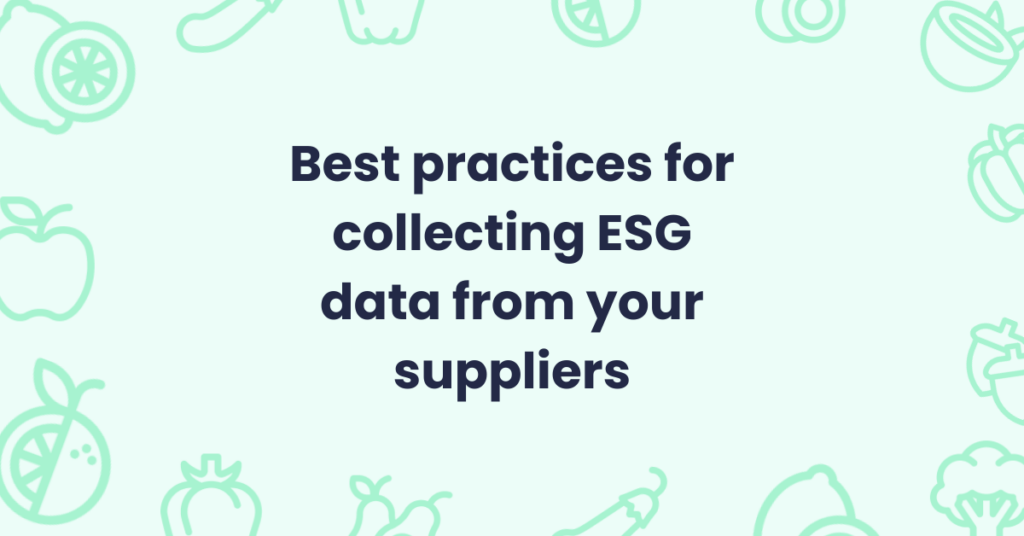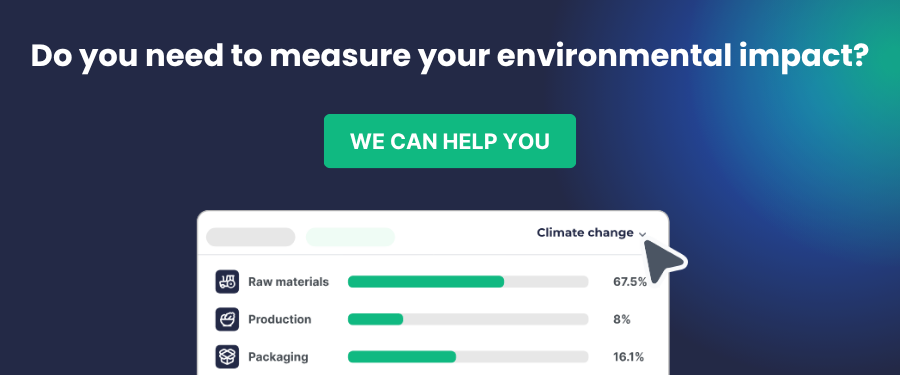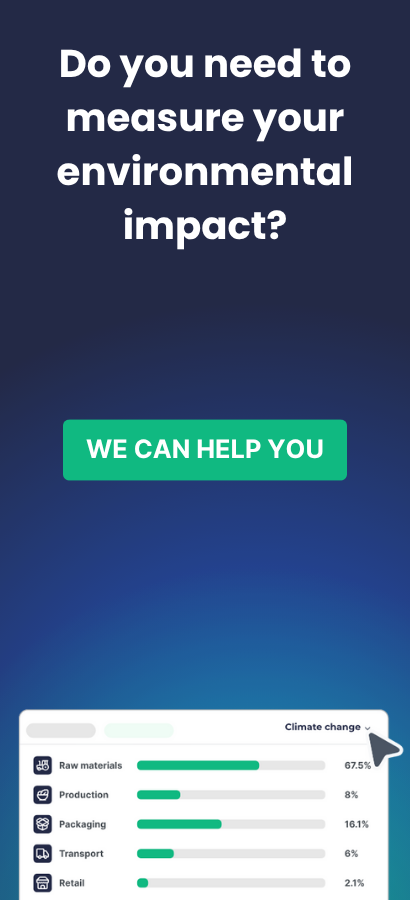Complying with the requirements set by the CSRD (Corporate Sustainability Reporting Directive) involves a rigorous process of collecting ESG (environmental, social, and governance) data from suppliers. To ensure that this data is accurate, reliable, and verifiable, it’s essential to follow best practices when requesting and gathering information. This ESG checklist will guide you through this process, along with mistakes to avoid to ensure data quality.
Key steps to collect ESG data from your suppliers
1. Define which ESG data you need to collect
Before contacting your suppliers, make sure you have a clear list of relevant ESG indicators for your company and those required to comply with the CSRD. Divide the data into environmental, social, and governance categories, and establish an implementation timeline.
Actions to take:
- Identify key environmental indicators: carbon footprint (Scopes 1, 2, and 3), water consumption, waste management, use of renewable energy.
- Establish social indicators: working conditions, gender equality, human rights, health and safety.
- Define governance indicators: anti-corruption practices, business ethics policies, regulatory compliance.
Remember: Align these indicators with the specific requirements of the CSRD materiality assessment and other relevant international frameworks, such as the Greenhouse Gas Protocol or the Sustainable Development Goals (SDGs).
2. Use a standardized data collection template
A standardized reporting template facilitates data collection and ensures that all suppliers report information consistently and comparably. This will help you analyze the information more efficiently.
Actions to take:
- Create a clear, structured form specifying the ESG indicators that suppliers should complete.
- Ensure the template includes guidelines to help suppliers understand how to measure and report each indicator.
Don’t do this: Avoid requesting data in formats or units of measurement that vary among suppliers. Consistency is key to avoid errors when comparing data.
3. Train your suppliers on the importance of ESG data
Not all suppliers are familiar with ESG requirements or standards like the CSRD. Providing training or resources that explain the importance of collecting and reporting this data helps improve data quality.
Actions to take:
- Organize webinars or workshops on how to collect ESG data according to international standards.
- Share guides or examples of best practices to help suppliers understand how to measure and report their data correctly.
Don’t do this: Don’t assume all suppliers are aware of ESG standards. Ignoring training can result in incomplete or incorrect data.
4. Implement a digital system for data collection and verification
Using ESG management software allows centralized data collection, facilitating real-time tracking and verification.
Actions to take:
- Use ESG management software that enables suppliers to upload their reports directly.
- Ensure that the platform aligns with CSRD requirements and allows for automated report generation.
Don’t do this: Avoid manual ESG data management, as it increases the risk of errors and complicates verification.
5. Conduct internal and external audits of ESG data
Verifying ESG data is essential to ensure its accuracy and credibility. Perform internal audits to review the data and, if possible, external audits for impartial validation.
Actions to take:
- Schedule regular audits to review the ESG data submitted by suppliers.
- Hire external auditors to verify the authenticity of the information, using recognized standards like ISO 14064 (for carbon emissions) or SA8000 (for labor conditions).
Don’t do this: Don’t blindly trust the data provided without a verification process. Non-audited data may contain errors or be inaccurate.
6. Encourage continuous improvement with your suppliers
The process of collecting ESG data doesn’t end with a single report. Work with your suppliers to improve their sustainable practices, providing ongoing support and setting joint goals.
Actions to take:
- Regularly review suppliers’ ESG performance and provide feedback to encourage improvements.
- Set long-term sustainability goals that can be assessed together.
Don’t do this: Avoid neglecting ongoing communication and follow-up. Collecting data without working to improve sustainability long-term limits the positive impact of your ESG actions.
7. Incentivize suppliers committed to sustainability
Recognizing suppliers who excel in meeting ESG goals and adopt sustainable practices fosters motivation and encourages greater collaboration.
Actions to take:
- Offer incentives, such as long-term contracts or bidding preferences, to suppliers who demonstrate a strong commitment to sustainability.
- Publish awards or recognitions to highlight the most committed suppliers in public reports or sustainability events.
Don’t do this: Don’t overlook suppliers actively working to improve their ESG performance. A lack of recognition may demotivate them from maintaining these practices.

Common mistakes to avoid when collecting ESG data from suppliers
1. Not setting a clear framework from the start
One of the biggest mistakes is failing to clearly define which data are needed and how they should be reported. This creates confusion among suppliers and can lead to incomplete or incorrect data.
Avoid: Requesting general information without a specific framework or clear guidance.
2. Requesting irrelevant data
Another mistake is asking for ESG data that aren’t relevant to the operation of certain suppliers, creating unnecessary workload and reducing supplier engagement.
Avoid: Asking for generic ESG indicators that don’t apply to the sector or activity of your supplier.
3. Not involving suppliers in the process
Failing to communicate with suppliers about why ESG data are needed can lead them to not take the request seriously or not prioritize sustainability.
Avoid: Overlooking collaboration and not following up with suppliers to ensure they understand the importance of ESG data.
4. Relying on unverified data
A serious mistake is accepting data without verification, compromising the quality of the ESG report and potentially causing regulatory compliance issues.
Avoid: Accepting data without conducting audits or using platforms that allow data verification.
Conclusion
Collecting ESG data from suppliers is essential for complying with the CSRD and other international sustainability regulations. By following these best practices, you can ensure that the collection process is efficient, accurate, and beneficial for both your company and your suppliers. Avoiding common mistakes will allow you to generate solid ESG reports and continuously improve sustainability throughout the supply chain.



